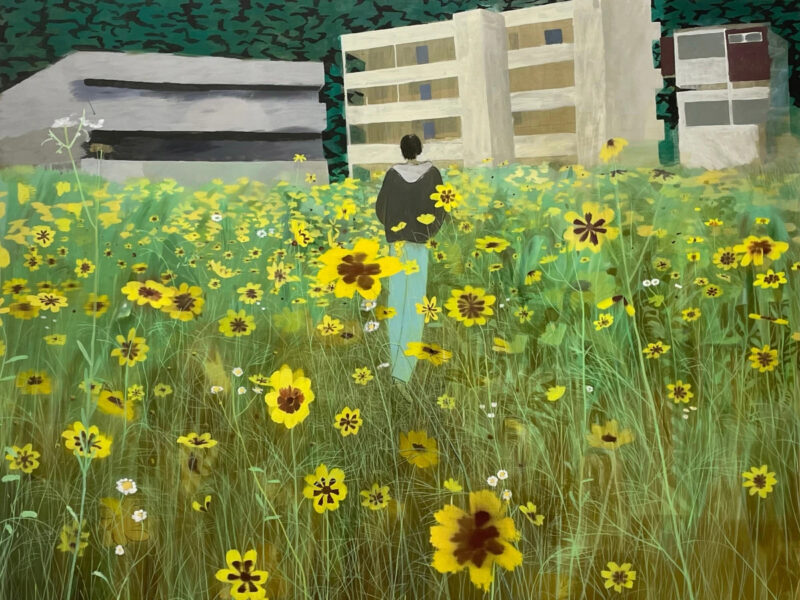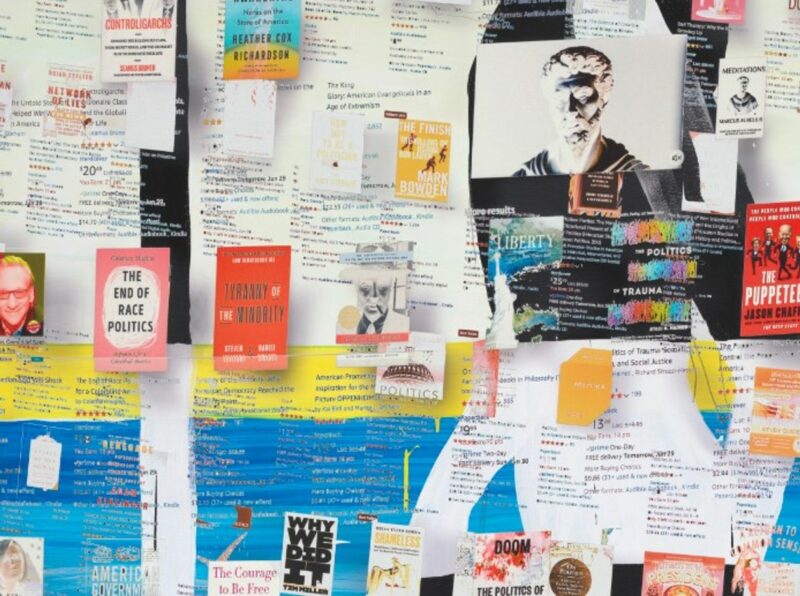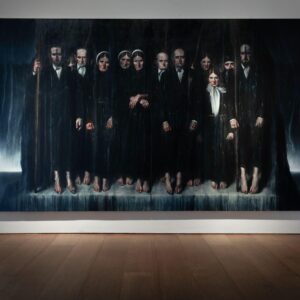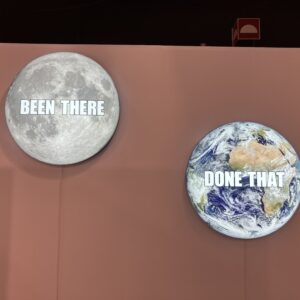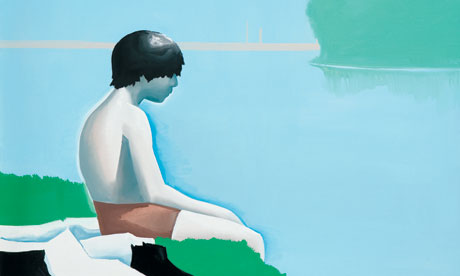
Image:’A kind of visual silence’ … Wilhelm Sasnal’s repainting of George Seurat’s Bathers at Asnières (detail). Photograph: Wilhelm Sasnal/Sadie Coles HQ
The boy sits beside the Seine on a sunny afternoon, staring blankly at the water, his legs dangling over the bank. The central figure in Georges Seurat’s 1884 Bathers at Asnières, he has been repainted by the Polish artist Wilhelm Sasnal. In Sasnal’s version, the boy is alone, sitting in a kind of visual silence, all detail drained to a minimum. Everyone else has gone; the factories on the horizon are reduced to an aching, peach-coloured line cutting through the flat blue of river and sky.
Seurat’s painting reminded Sasnal of a story his grandmother told, about the hot summer of 1939, weeks before the German invasion of Poland, when people bathed in the river near his birthplace. That summer was a preamble to years of misery, and Sasnal records it as a kind of perpetual waiting. The late sculptor Juan Muñoz once wrote that looking at Seurat’s Bathers at Asnières was like looking at the desert, and I, too, have always felt that there was an awful emptiness at its heart. It is a kind of emptiness that Sasnal amplifies, again and again.
Sasnal’s paintings have a terrible, bleak economy. But the longer you look, the more complicated things get. For a long time I resisted Sasnal. His paintings seemed to me too cursory, too easy. Featureless and uninflected skies and landscapes, graphic trees, faces approximated by a mess of broken brush-strokes, frugal compositions whose stinginess appeared schematic, dour and dyspeptic. Sasnal often makes living things and places look dead – flattened, affectless and drained of life. Ragged starlings roost on bare, angular branches against a red sky. People stand and kneel in churches whose grim details seem as joyless as faith itself. A burst of white paint ascends from an architectural outline of a power plant in Iran, irradiating the sky over a brown land.
Sasnal has painted Pope John Paul II, distant and smudged on a throne, and a portrait of Hitler; Robert Oppenheim leaning against a car; historical figures and his own wife and daughter; big things and little things, momentous events and the everyday. Neither expressionist (these paintings’ inexpressivity matters), nor sentimental (though sentiments count), Sasnal’s paintings at the Whitechapel make you realise how carefully tuned his pared-down sparseness is. The stillness and – how can I say it? – nastiness of his art eventually gets to me. His paintings worm their way in. They’re not cynical, but instead sly and insidious. Sometimes they even approach a kind of beauty. A feeling of arrested melancholy dominates.
Personal history and the history of Poland are central to Sasnal’s work. Like the sculptor Miroslaw Balka, his art is heavy with the weight of the past. It is all a kind of reworking, of stories and other people’s images, a tracing of echoes; sometimes he takes elements from Art Spiegelman’s 1973 graphic Holocaust novel Maus, and stills from Claude Lanzmann’s 1985 documentary Shoah as source material. Blanks in history and blanks and blind-spots in Sasnal’s paintings are weighty elisions. Even Poland’s winter snows seem to cover more than just the frozen landscape.
When he paints the walls of a pig-raising factory, it echoes the barracks at a death camp. Sasnal paints it with uninflected, dumb, ugly plainness. The atmosphere – or lack of it – seems exactly right. Unavoidably, one makes comparisons with the Belgian painter Luc Tuymans, who once painted the interior of the gas chamber, but who often focuses on incidental details. Tuymans is precise, while Sasnal insinuates, gropes around, is still gauging the measure of his art. This is exciting to watch.
Sasnal’s Whitechapel exhibition is a rich and varied experience. At times it bursts with full colour: one painting, Photophobia (2007) is about being chronically hung-over, and depicts nothing except the sensation of too much light, searing morning-after eyeballs. Nauseous colour leaks in at the periphery of vision. The centre of the painting flares with finger-painted slitheriness. A painting of his daughter with the sun behind her replicates the coruscating effects of overexposure that blighted the photograph that provided Sasnal’s source. Sometimes his work makes you want to squint, or throw up.
The failures and mistakes that go into his paintings matter. “I find it suspicious when things are too easy,” Sasnal told the show’s curator, Achim Borchard-Hume. “Hardship is part of the work.” The simplicity and directness of his paintings is arrived at with difficulty. His art depends on the resistance of the medium. The mistakes let the air in, and take the work beyond intention.
Maybe Sasnal is not sure where to place himself amongst these images and non-images either, working between description and abstraction. Perhaps his work is perverse. He focuses on the shadows around Robert Smithson‘s crotch, the bulges and creases in the late American artist’s jeans, the engulfing shadow where the buttocks meet the chair. The cropped image conveys a feeling of deep erotic unease and intimacy, homing in on darkness.
How can one paint at all now and not be perverse? You can’t just sit down and pretend that photography hasn’t happened, or that painting’s obligations haven’t changed since the 19th century. Nor can you forget the history of painting, and all the other kinds of images that inundate us. A belief that painting can still talk about the world in meaningful ways might itself be perverse as well as paradoxical. The questions won’t go away, and drive the work of Gerhard Richter, Marlene Dumas and Sasnal, all currently showing in London. Richter’s swiped-over twin towers, Dumas’s crucifixions and portraits of Osama bin Laden and Phil Spector (looking like a creepy and ageing Ken Dodd) at Frith Street Gallery, and Sasnal at the Whitechapel: together these artists evidence a kind of mistrust and doubt, as well as a discovery that painting can be both revealing and critical. Rather than being killed by photography, or film, or oppressed by its own history, painting has somehow been freed for other tasks.
guardian.co.uk © Guardian News & Media Limited 2010
Published via the Guardian News Feed plugin for WordPress.

